3 Techniques to Utilize
Securing and connecting wood to concrete can often present a daunting challenge to builders and repair specialists alike. In this article, we will explore the intricacies of nailing wood to concrete, detailing the approaches, cautions, and stated provisions needed to accomplish this venture.
Securing wood to concrete is an integral part of both residential and commercial construction, often used to attach wooden studs to walls, for baseboards, and frames around windows and doors. Through nail application, an unbreakable connection is created between the two materials, providing a reliable link for even the most labor intensive endeavors.
Guidelines to Implement:
Before embarking on the project, ensure all components required for the task are in hand. This array should include a hammer, concrete nails, drill with a masonry bit, timber boards, goggles, and protective gloves. Follow these simple steps to proceed:
Ready the area for the wood: Clean the ground where you plan to insert the nails, eliminating any detritus, powder, or grease that can prevent a permanent bond.
Measure out and position the wood to be connected to the concrete by taking a measuring tape and noting those spots with a pencil.
To attain a secure placement, carefully drill holes into the marked areas using a masonry bit. The drilled holes should be slightly less than the size of the concrete nails, ensuring they are snugly fitted.
After the holes are in place, it’s time to complete the assembly by inserting the nails. Placing the board over the punctures, drive the nails directly into them – keeping watch so that they don’t start leaning or poking out. Making sure the nails remain steady will help secure the cushion for a strong, sturdy hold.
Completing your deck surface entails a step-by-step process. Move through the procedure; begin with the nails and planks until the entire area is covered. Then, simply repeat these steps and eventually the surface is transformed and ready to use.
Depending on the task at hand and the materials used, there are various methods of anchoring wood to concrete. Among them are:
When working on projects that involve nailing wood to concrete, it is highly recommended to first secure the wood’s surface with construction adhesive. That way, the wood will remain firmly in place while simultaneously being provided with a strength-promoting bond.
Instead of hammering in nails, concrete screws offer an alternative means of attaching wood to concrete. These screws boast a specialized threading that digs into the cement to form a strong and resilient connection.
When confronting extensive burdens or extended planks, inserting metal brackets into the concrete exterior and then affixing the wood to the brackets is a viable structure.
Taking the proper precautions when securing wood to concrete is imperative to avert any possible mishaps. To avoid potential incidents, consider the following important guidelines:
Taking the proper safety precautions can make a world of difference. Protect your eyes and hands from fired-off fragments or hazardous splinters by wearing goggles and gloves when necessary.
Before any wall-mounting or drilling begins, ensure that the backside of the concrete is free from switches and outletsalong with any pipelines that may be running through the surface.
Make sure to use precisely-sized nails – ones that are either too large or too small could lead to a lesser grip strength, eventually causing the wood to come apart over time.
Tacking wood to concrete may appear to be a difficult feat; however, with the correct instruments, tactics, and cautions, it can be carried out seamlessly. By adhering to the measures elucidated above and using the suitable size and variety of nails, a dependable and durable junction between wood and concrete for your various ventures can be generated.
Related Product
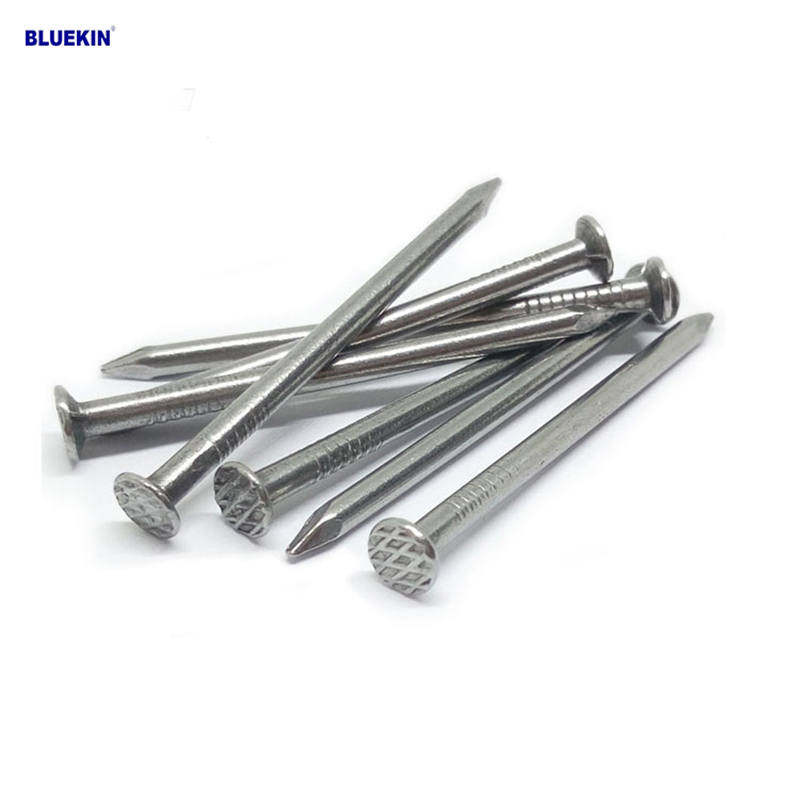
Common Nail
Product Information: Common Nail Material Q195, Q235 Shank diameter 1.2mm-10mm Length 19mm-300mm Finish polish/bright, electro galvanized, hot dip galvanized Head flated he […]
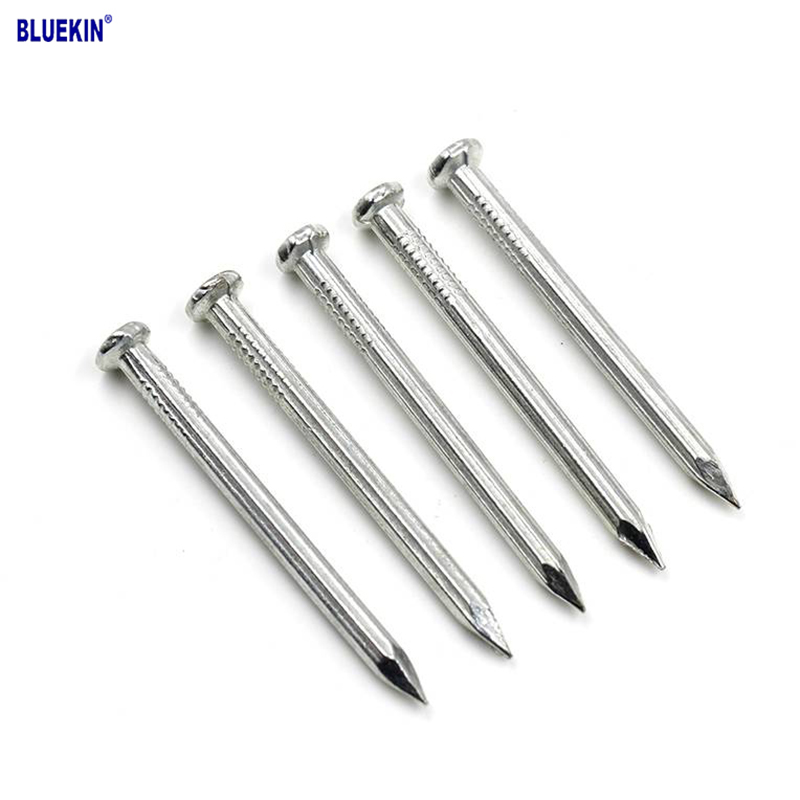
Concrete Nail
Product Information: Product name CONCRETE NAIL Material: #45 or #55 Steel Size: 1/2″-6″ Type: Round head with smooth shank or groove shank Treatment: Electro galvanized, ho […]

U Sod Staple
Product Information: Landscape Staples * 11 GAUGE STEEL CONSTRUCTION: The points on the staples are sharp enough to pierce commercial ground cloth, and the staples are long […]
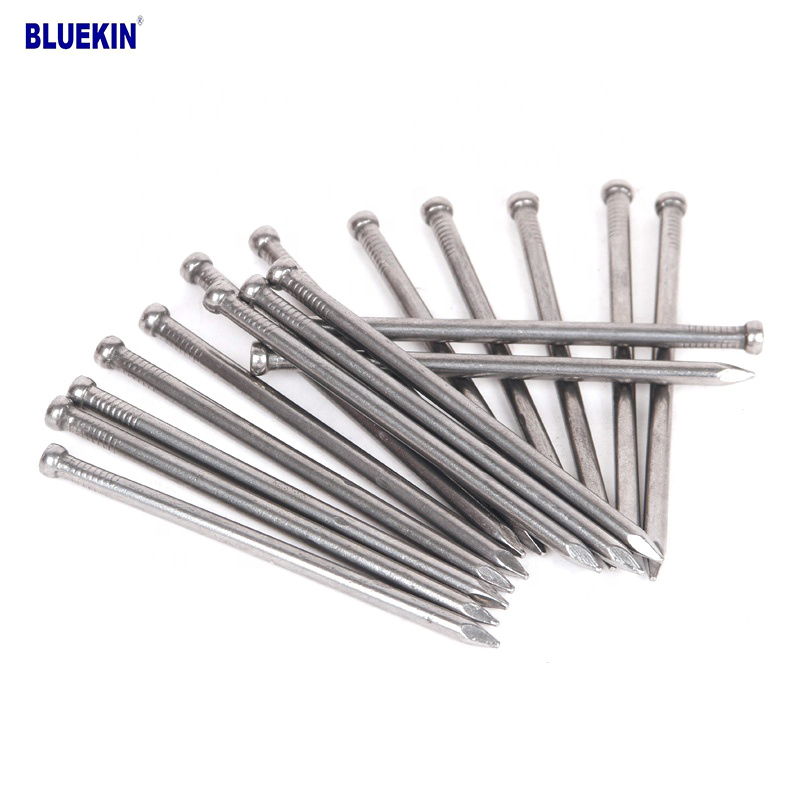
Headless Nail
Product Information: Cheap Lost Head Nails/ Headless Nails/ Finishing Nails Price Material Q195 or Q235 iron wire rod or according to request Size 1″ – 6″ Finish Polished or […]
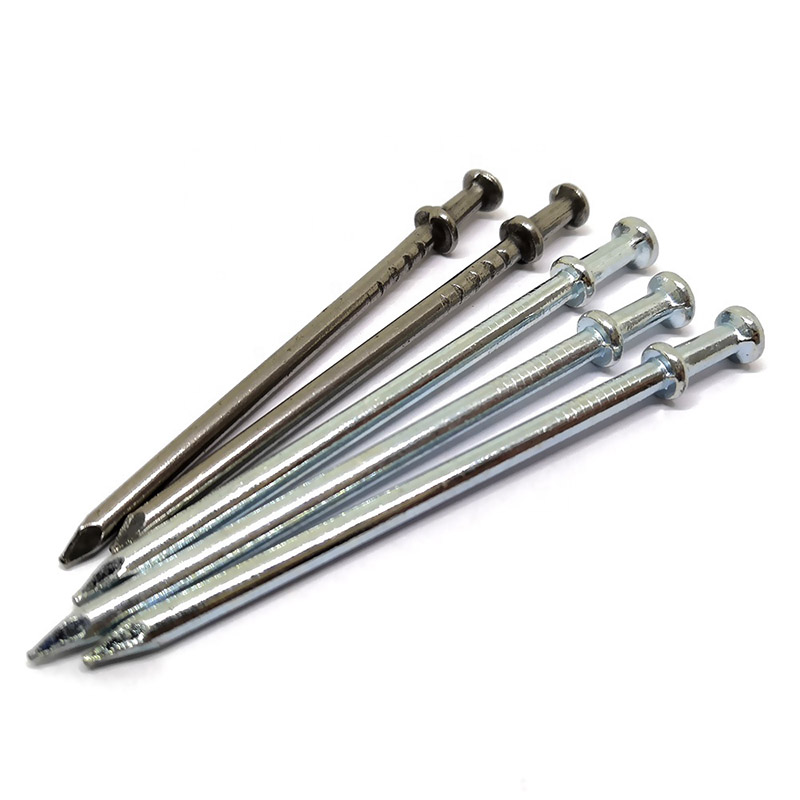
Double Head Nail
Product Information: Material Q195/Q235 Surface Treatment Bright, E.G, H.D.G, M.G, V.C, C.C, P.C and so on Head Two Head Shank Smooth Shank Point Diamond Point Kinds of pa […]
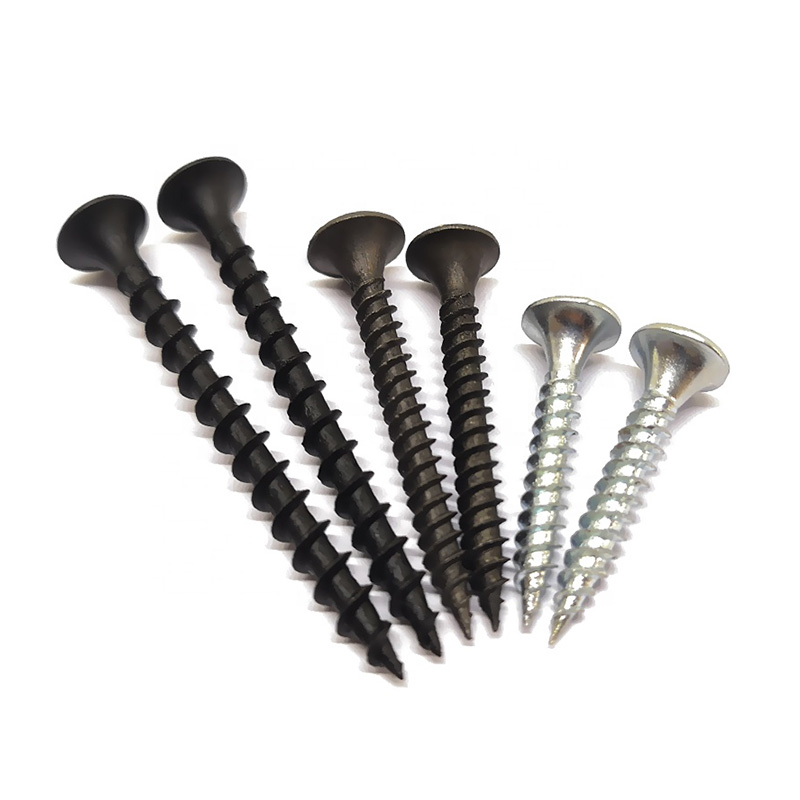
Drywall Screw
Product Information: Product Name Screws Drywall Nail Material Carbon steel C1022a Color Black,Galvanized Standard ISO,GB,DIN,JIS,ANSI,BSW Diameter M3.5-M6.3, 6#-14# Length […]
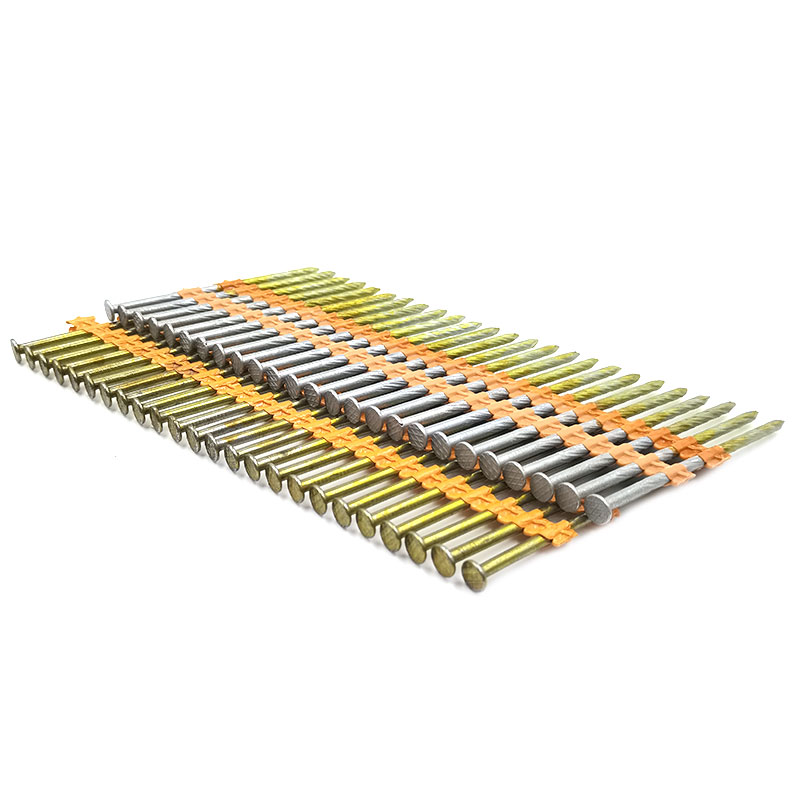
Plastic Strip Nail
Product Information: Diameter/mm(±0.05mm) Length/mm(±1.5mm) 2.87 50/60/65/70/75 3.05 70/75/83/90 3.33 75/83/90 3.76 75/90/100/130 4.11 75/90/100/130 4.5 75/90/100/130 Featur […]
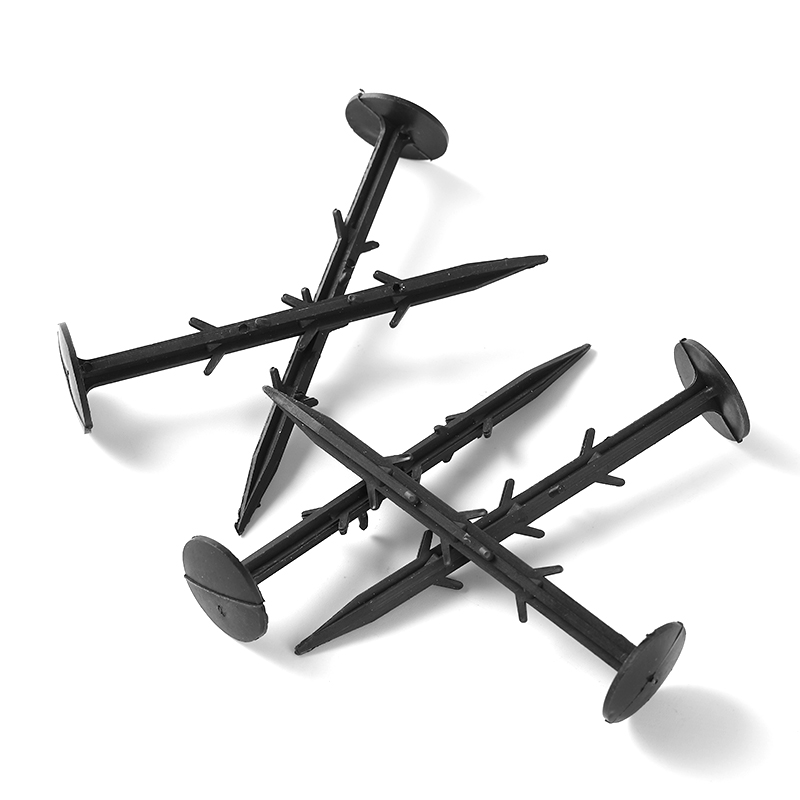
Garden Nail
Product Information: Black or yellow color plastic ground pegs are used for fix the ground cover or woven fabric or fleece on the ground. Material: Virgin PP OR PP +UV stabi […]
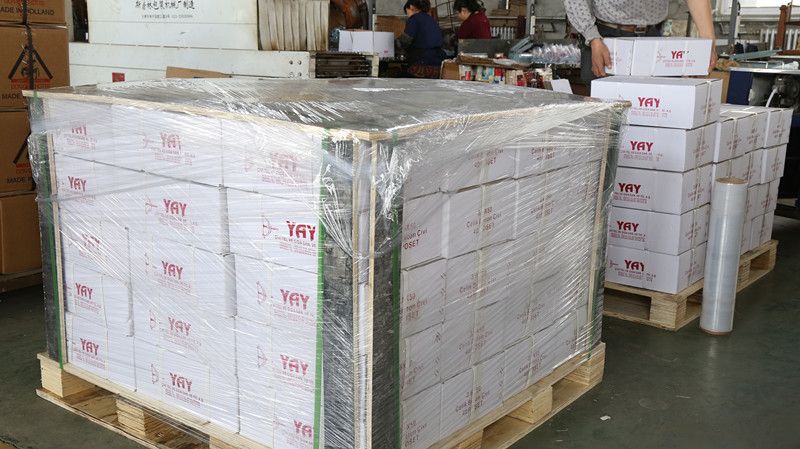
Black concrete nail
concrete nail with special materials, concrete nails are specialty nails compared with common iron nails. It is harder, the shank is short and thick commonly and it has excellent p […]